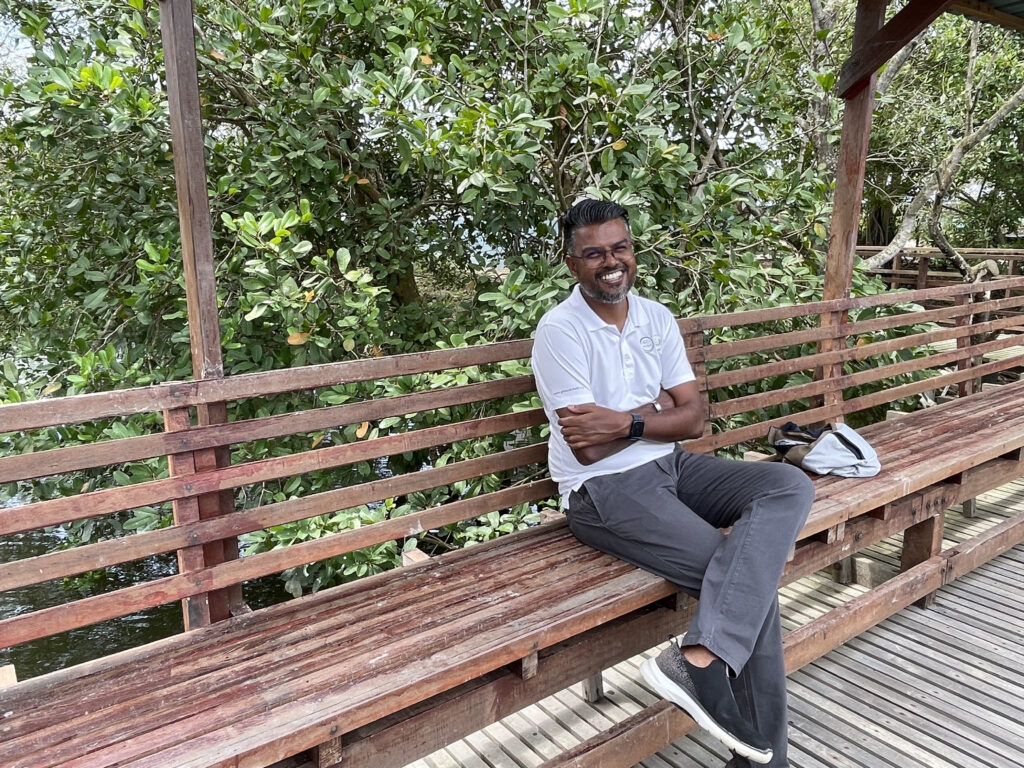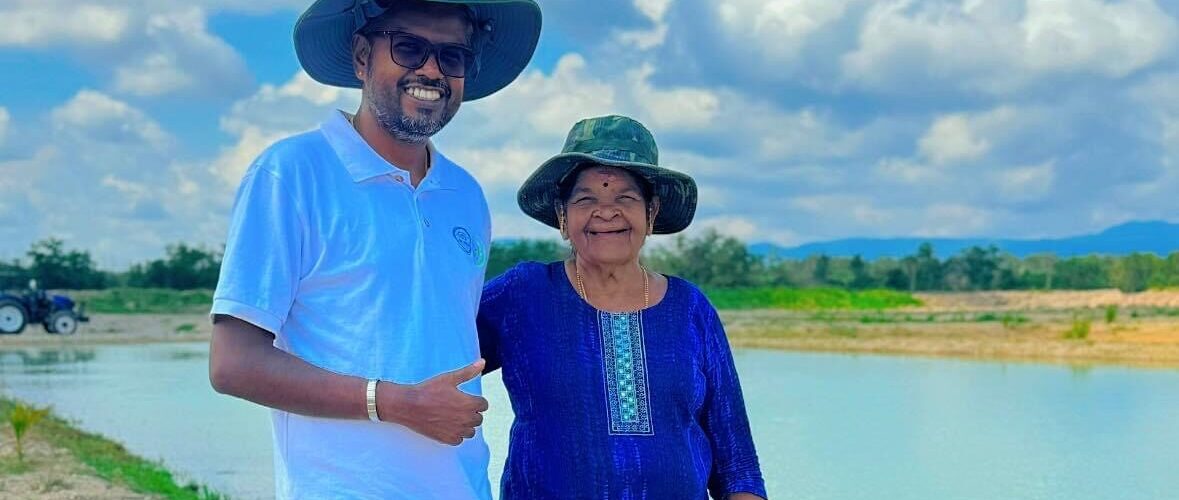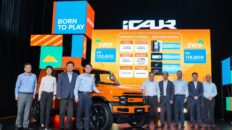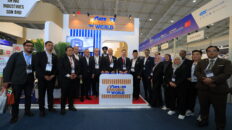From Setiawan to Science

Giva was born in Ayer Tawar, Perak. He attended a Tamil vernacular school and was expected, like many others, to follow a conventional career path—medicine being top of the list. However, a turning point came early in life: Giva lost his father when he was just 15 years old. That loss reshaped his trajectory.
“Had my father lived longer, I might have become a doctor. But I see it now as the universe nudging me in another direction,” he said. He chose to study Biotechnology at AIMST University and then completed a Master’s in Aquaculture Biotechnology at Universiti Malaya and subsequently a Master’s in Sustainable Aquaculture from the University of St Andrews in Scotland; where he subsequently served as a fellow.
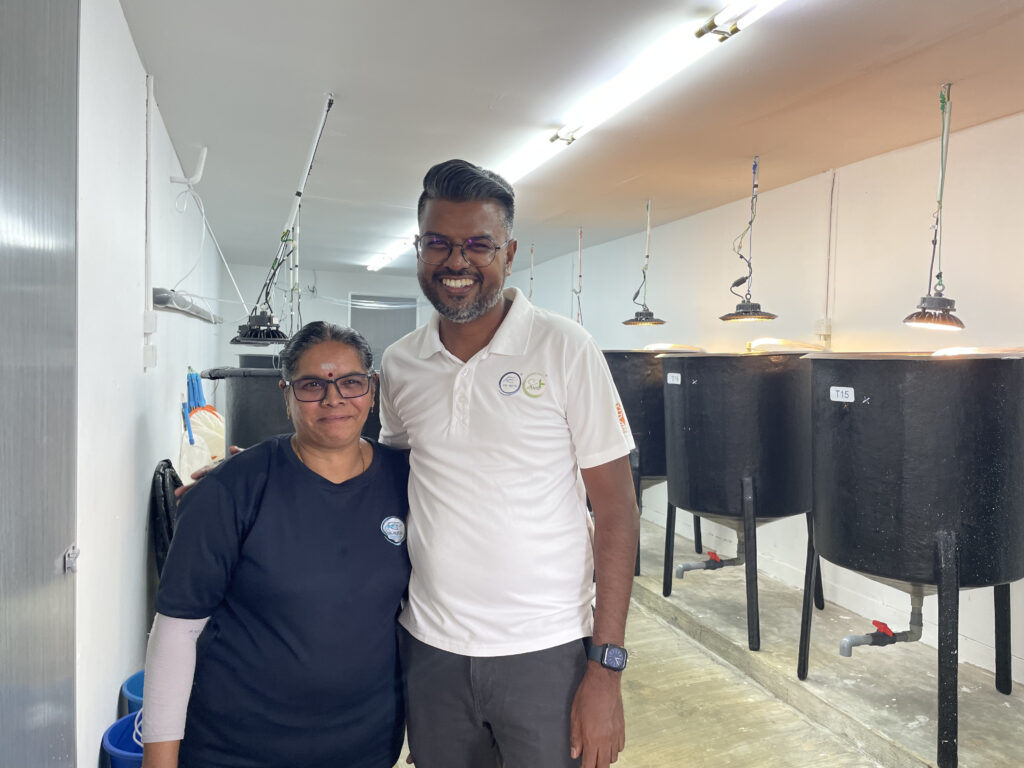
Giva’s journey is far from linear. His first job after university was at the restaurant Italiannies, where he rose to Assistant General Manager in just six months. But no sooner, his passion for prawns had him leaving a lucrative salary to work on a breeding farm—with no EPF or job security. “We only got paid if we sold prawns,” he laughed. “The best education I ever had.” Later on and before GK Aqua, Giva had spent formative years with Crops for the Future.
Charting the Waters
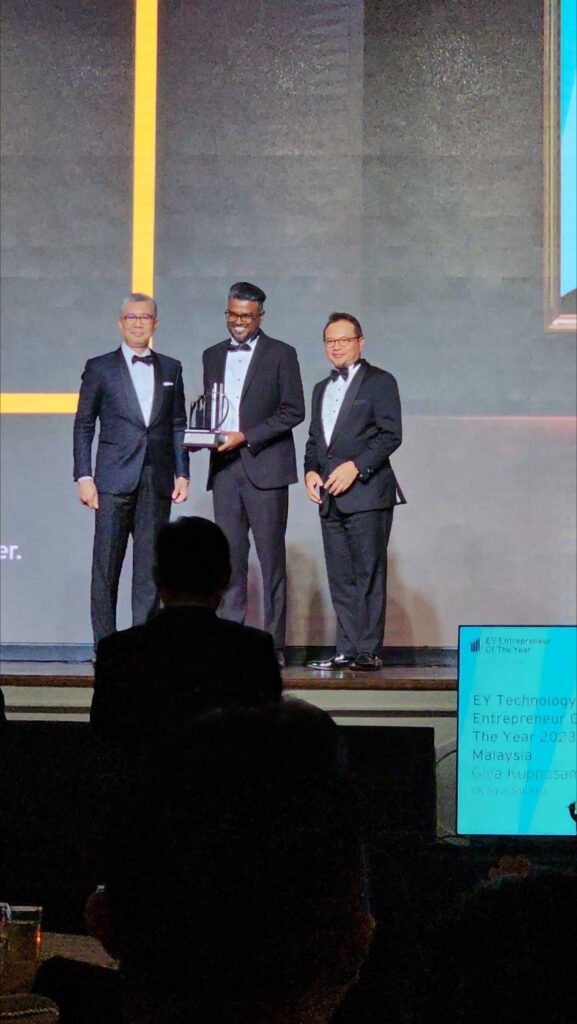
GK Aqua was incorporated in 2016. At the time, Giva had no lab, no funding, and no team. What he did have was the ground floor of his rented home, which he converted into a humble R&D facility. A year later, the company received BioNexus status, a national biotech designation offering tax incentives for innovation.
The first production site was a 10,000 sq ft rented space in Lenggeng, Negeri Sembilan. It was a logistical headache—far from the sea and too small for real scalability. But the big break came in 2020, in the thick of the pandemic, when Giva secured RM2 million from Malaysia’s Cradle Fund.
< Giva Kuppusamy was named EY Entrepreneur of the Year 2023—an honour reserved for visionary leaders who demonstrate entrepreneurial spirit, purpose-driven impact, and sustained business performance.
The funding allowed GK Aqua to move to a new facility in Lukut, Negeri Sembilan. Cradle had set a high target: scale up to RM2.4 million within 16 months. “We hit RM2.5 million on time and passed the KPI.”
By 2023, the company secured 359 hectares of land in Rompin, Pahang, part of a long-designated aquaculture zone. Development began in 2024, and the team has since grown.
Breakthrough in Prawn Science
The Food and Agriculture Organization (FAO) of the United Nations recognises the Malaysian Giant Freshwater Prawn (Macrobrachium Rosenbergii) as originating from Malaysia, where it was first bred and conserved in the 1960s. This global acknowledgement affirms Malaysia’s foundational role in freshwater aquaculture—one that GK Aqua Sdn Bhd is now advancing through modern biotechnology.
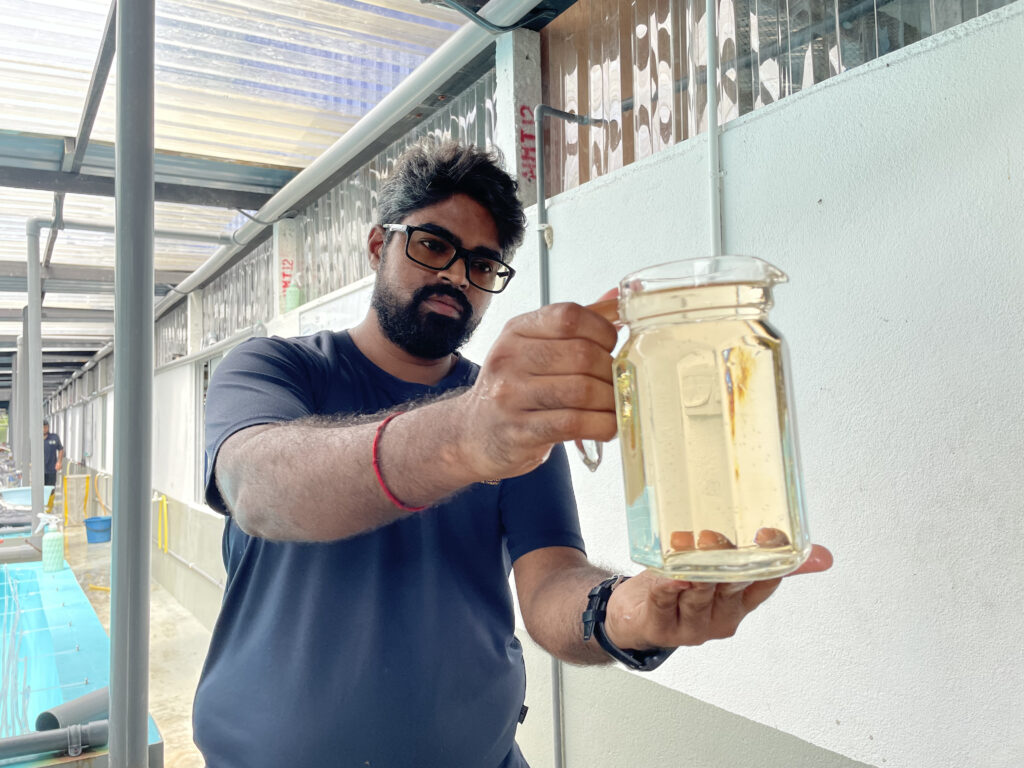
Repositioned as the Malaysian Freshwater Prawn (MFWP), the species is being developed by GK Aqua into a high-value, sustainable aquaculture product aligned with national food security goals and export ambitions.
A core challenge in prawn farming is the natural sex imbalance—with up to 70% of the Udang Galah population being female. While females grow slowly due to energy investment in reproduction, males grow faster, larger, and fetch higher prices, driven by hormonal and behavioural traits. This imbalance limits productivity and profitability. To overcome it, Giva and his team developed a non-GMO RNA interference (RNAi) technique that enables the production of all-male populations, unlocking higher yields, shorter cycles, and significantly improved commercial outcomes.
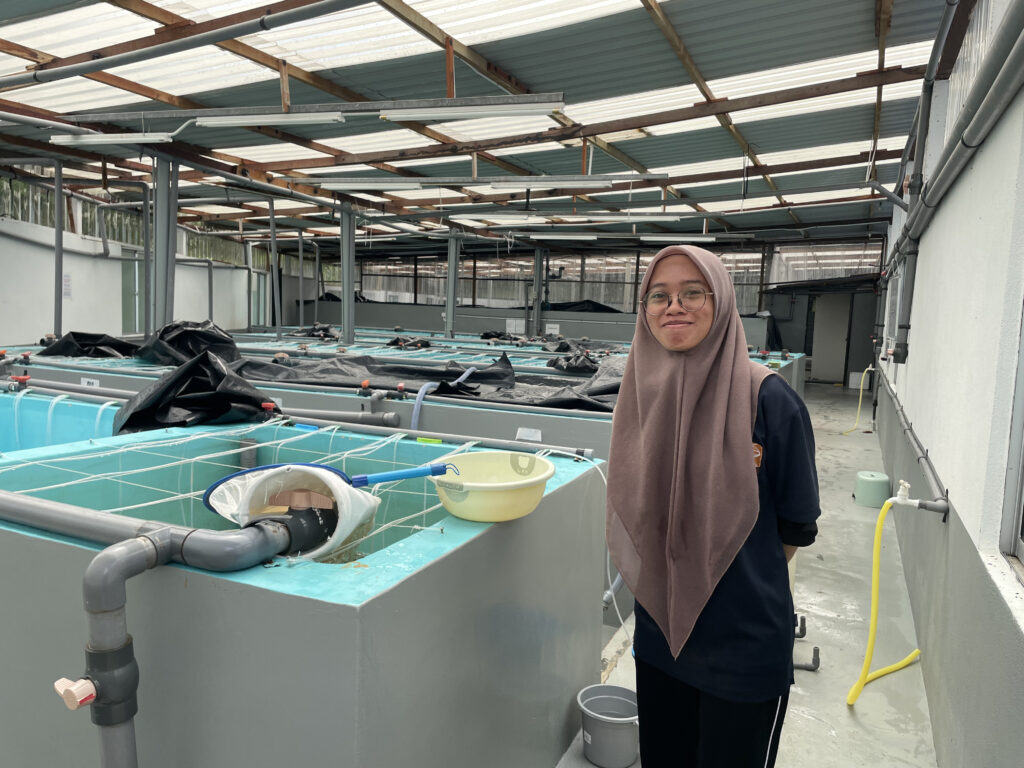
A Scientific Pioneer

GK Aqua’s method involves converting juvenile male prawns into fully functional females—called “neo-females”—by silencing the androgenic gland hormone (IAG) gene, which is responsible for male development. Using double-stranded RNA (dsRNA) molecules, the technique triggers the prawn’s natural RNA interference mechanism, preventing the development of male traits.
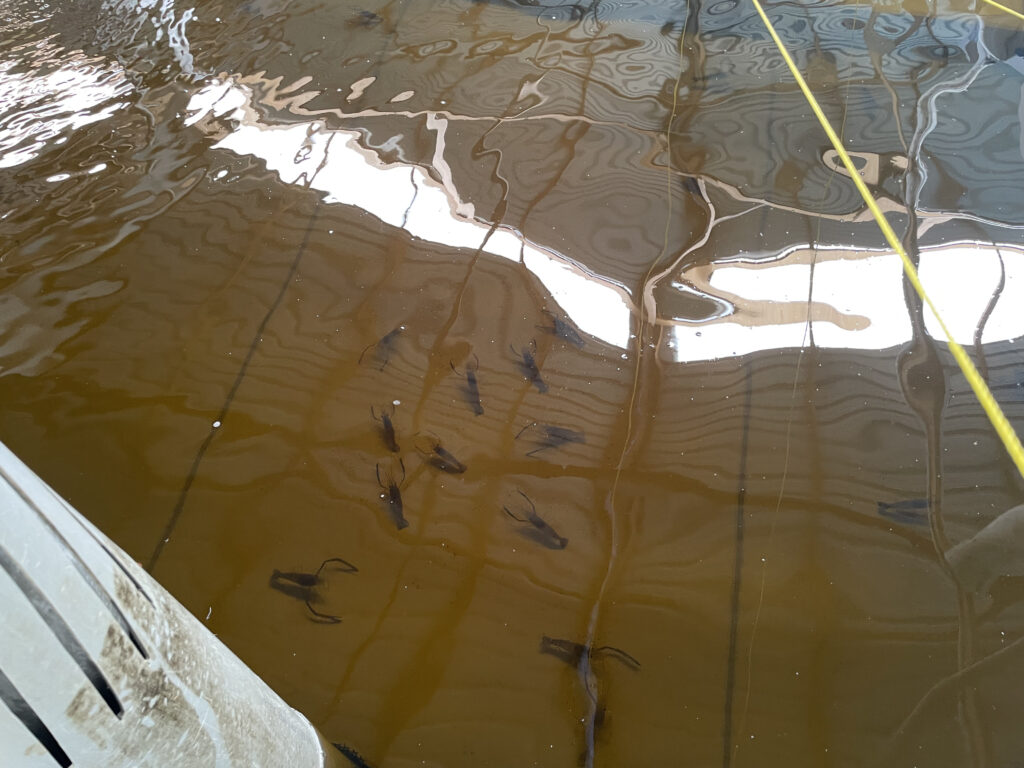
The result: the male prawn becomes a phenotypic female, capable of producing 100% male offspring when bred with a normal male. This unlocks a transformative advantage—farms can now create high-value, faster-growing male prawns at scale.
Crucially, this process does not alter the prawn’s DNA, involves no hormones or genetic modification, and has been verified by Malaysia’s GMO Safety Committee as safe.
“This is gene silencing, not genetic engineering,” said Giva. “It’s precise, it’s safe, and it delivers results.” The commercial benefits are enormous: 3 times faster growth, 3 times higher yield, and 3 times greater profitability. GK Aqua filed patents for this RNAi method and related genetic sex markers, creating strong intellectual property protection around their core technology.
In-House Science
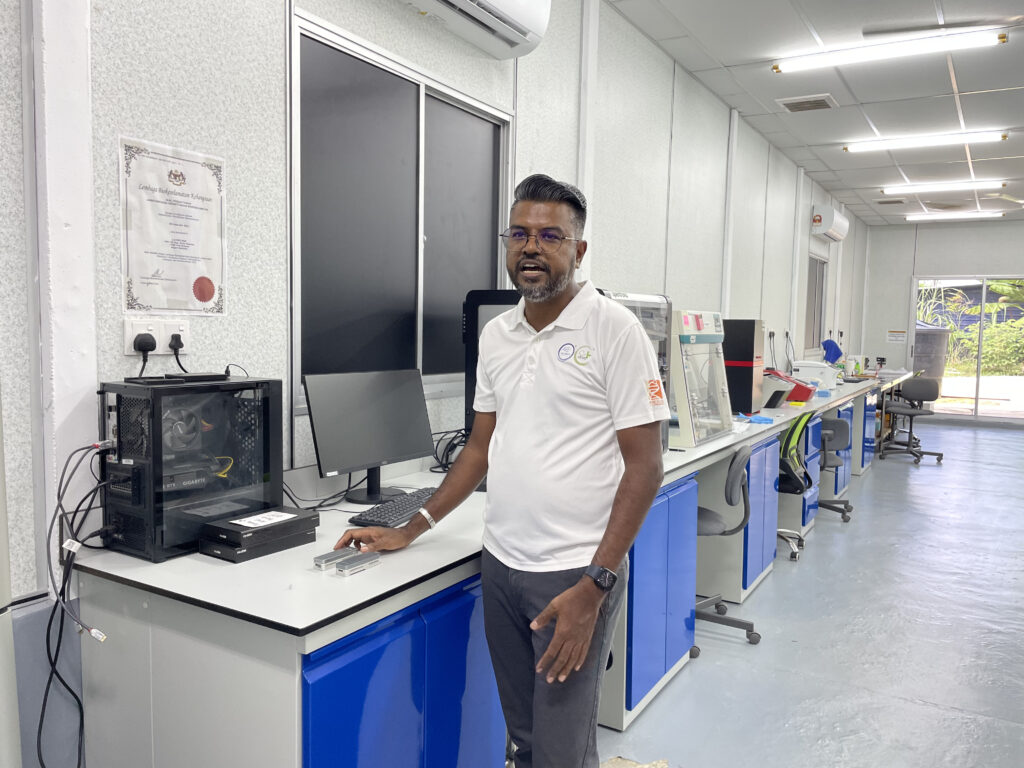
Innovation at GK Aqua is embedded. Early in their R&D journey, the team attempted to use DNA markers that had been published, only to discover they were ineffective. “Either their data was wrong, or our prawn was genetically distinct,” said Giva. “I bet on the second.” That insight led to GK Aqua sequencing the entire genome of the Malaysian Udang Galah, establishing a foundational reference for future breeding and sex identification.
This work led to the development of their genetic sex marker system, which enables technicians to differentiate between males and females at the juvenile stage—before any physical signs appear.
In 2022, Giva also launched a subsidiary, Sento Biotech Sdn Bhd, to focus on feed and nutrition. This allowed GK Aqua to remain laser-focused on genetics and nutrition. Together, the two companies form a vertically integrated model that now encompasses the entire aquaculture value chain.
Leaves, Maggots, and the Circular Bioeconomy
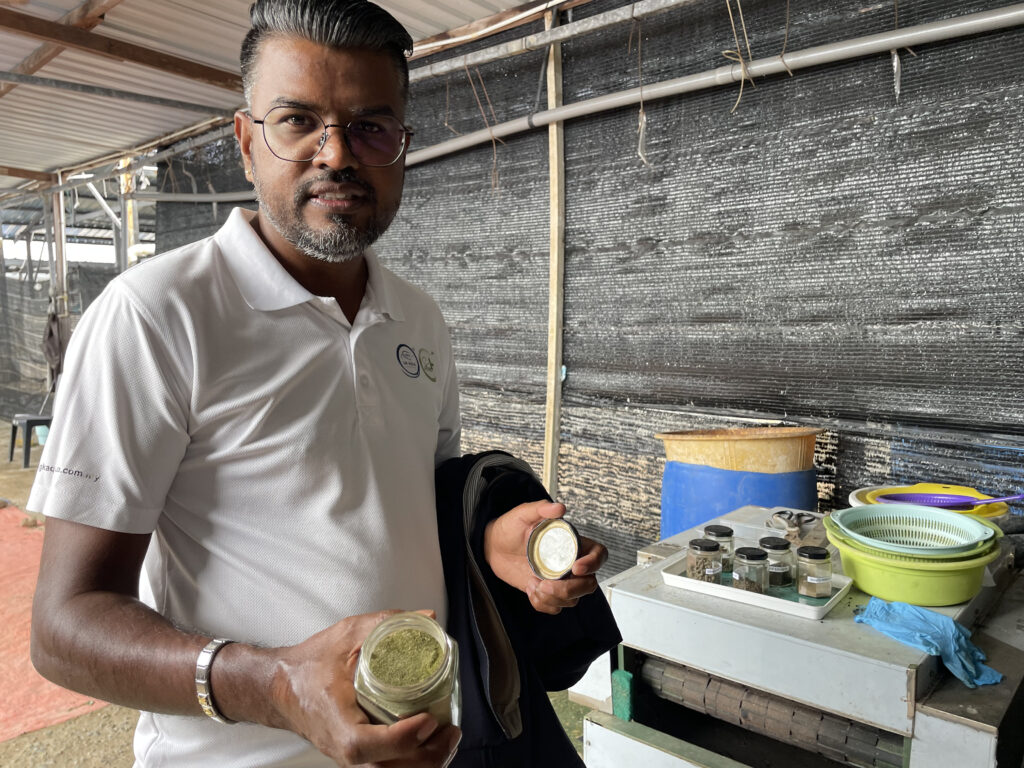
Giva’s drive for circularity is greatly influenced from his time at Crops for the Future, an international outfit that focused on underutilised crops. During his tenure, he developed a conceptual model linking aquaculture, insect protein, and plant biomass—a model that GK Aqua is now executing at scale.
It starts with Sesbania grandiflora, a hardy tree, that GK Aqua grows. Its leaves are rich in protein and calcium and are used to feed Black Soldier Fly (BSF) larvae, which in turn are harvested and processed into high-quality insect meal for GK Aqua’s prawns. The by-product, or maggot frass, is used as bio-fertiliser.
This circular model not only slashes feed costs but also reduces contamination risks common in traditional feeds made from feather meal or blood meal. Gene expression analysis of prawns fed with GK Aqua’s custom feed showed lower heat shock proteins indicating reduced stress; and higher molting hormone expression indicating improved reproduction.
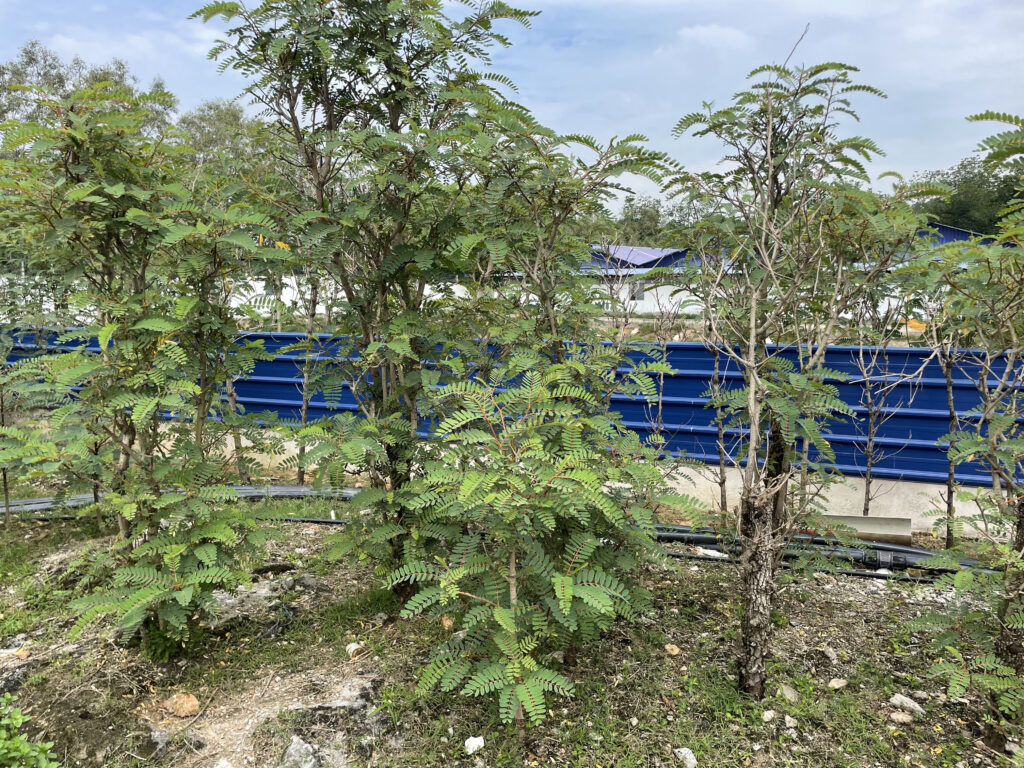
Rooted in Community
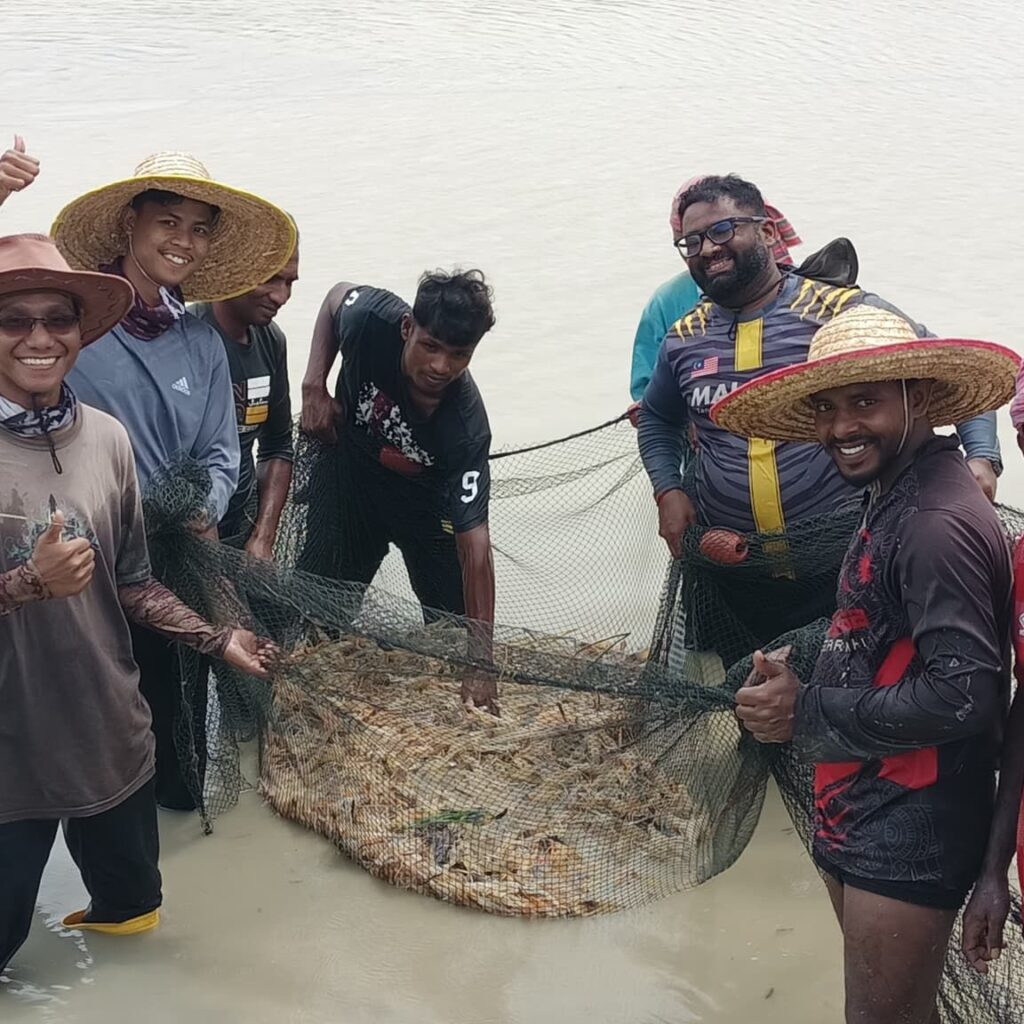
Farmers start with two ponds and earn RM4,000 per month. As they build experience and credit history, they can scale to larger plots. “I take it personally,” Giva said. “If someone is willing to work, we’ll back them. But if you outsource the work, we shut it down. This isn’t charity—it’s empowerment.” Giva provides state-of-the-art technology, including drones and weather stations, along with a proprietary app that enables farmers and breeders to scale their operations effectively. “We are laying out all the cards,” said Giva.
“There can be no talk about food security without a plan to ensure farmer income security,” he emphasised, adding that his main goal is to replicate the process for other food sources.
From Tank to Marketplace

Despite the science, GK Aqua remains grounded in consumer reality. Giva is experimenting with ready-to-eat products—udang galah pasta, nasi lemak, and even a sang har mee. “Malaysians love their udang and especially udang galah,” he mused.
We hope to go direct-to-consumer via online shops, office block freezers, and SME pantry deals. The company has a halal-certified central kitchen and is U.S Food, Drug and Administration (USFDA) approved.
Dignity, Data, Determination
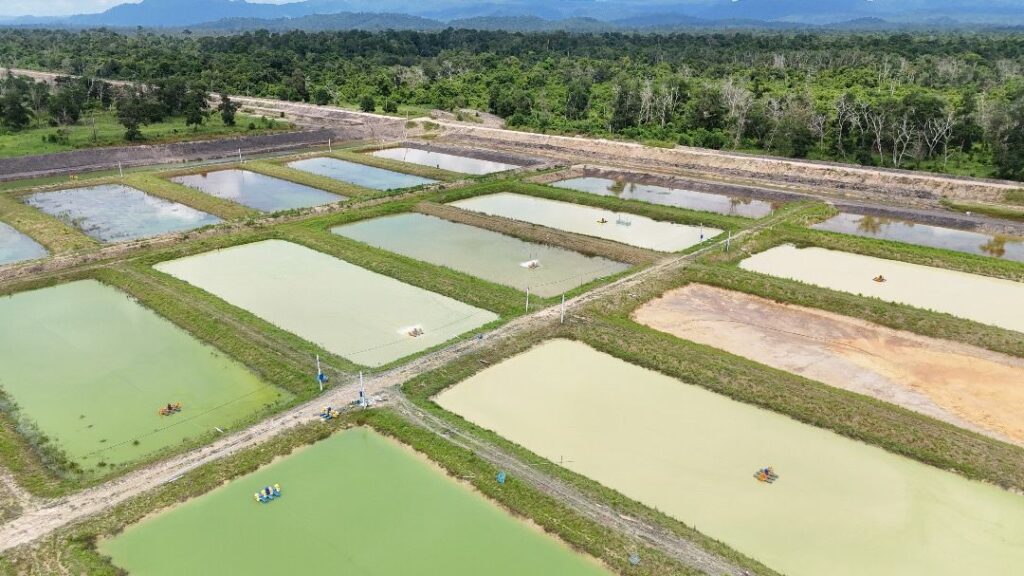
GK Aqua aims to become the world’s largest producer of Udang Galah. With its flagship 1,000 acres in Rompin and expansion underway, Giva is focused on execution. Nationally, he remains firm: “Malaysia is a blessed country. We have biodiversity and brainpower. We need to act. I’m not here to romanticise biodiversity. I’m here to commercialise it—with dignity, with data, and with determined purpose – sustainably.”
